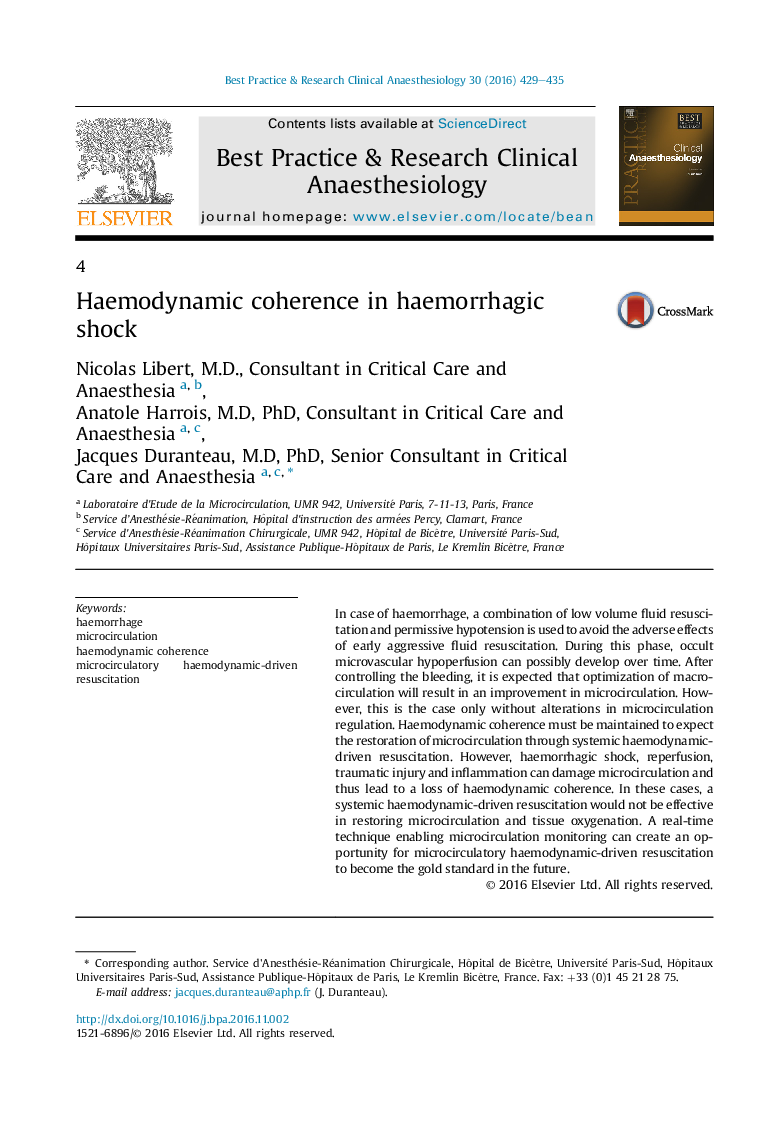| Article ID | Journal | Published Year | Pages | File Type |
|---|---|---|---|---|
| 8610945 | Best Practice & Research Clinical Anaesthesiology | 2016 | 7 Pages |
Abstract
In case of haemorrhage, a combination of low volume fluid resuscitation and permissive hypotension is used to avoid the adverse effects of early aggressive fluid resuscitation. During this phase, occult microvascular hypoperfusion can possibly develop over time. After controlling the bleeding, it is expected that optimization of macrocirculation will result in an improvement in microcirculation. However, this is the case only without alterations in microcirculation regulation. Haemodynamic coherence must be maintained to expect the restoration of microcirculation through systemic haemodynamic-driven resuscitation. However, haemorrhagic shock, reperfusion, traumatic injury and inflammation can damage microcirculation and thus lead to a loss of haemodynamic coherence. In these cases, a systemic haemodynamic-driven resuscitation would not be effective in restoring microcirculation and tissue oxygenation. A real-time technique enabling microcirculation monitoring can create an opportunity for microcirculatory haemodynamic-driven resuscitation to become the gold standard in the future.
Keywords
Related Topics
Health Sciences
Medicine and Dentistry
Anesthesiology and Pain Medicine
Authors
Nicolas (Consultant in Critical Care and Anaesthesia), Anatole (Consultant in Critical Care and Anaesthesia), Jacques (Senior Consultant in Critical Care and Anaesthesia),
